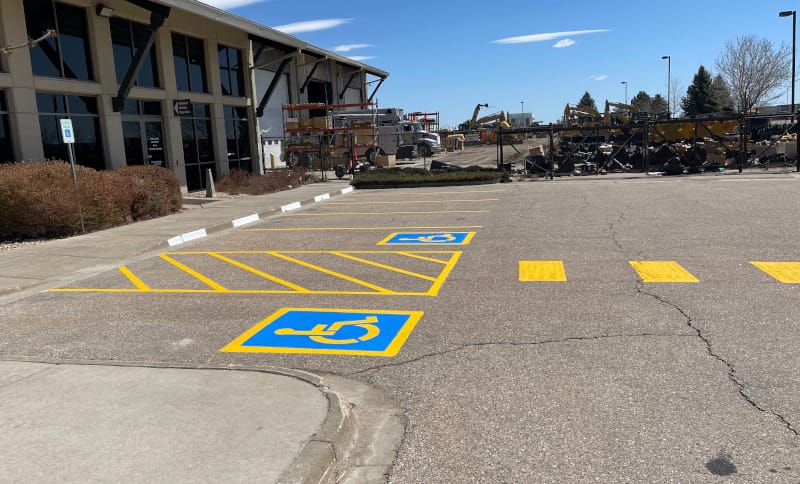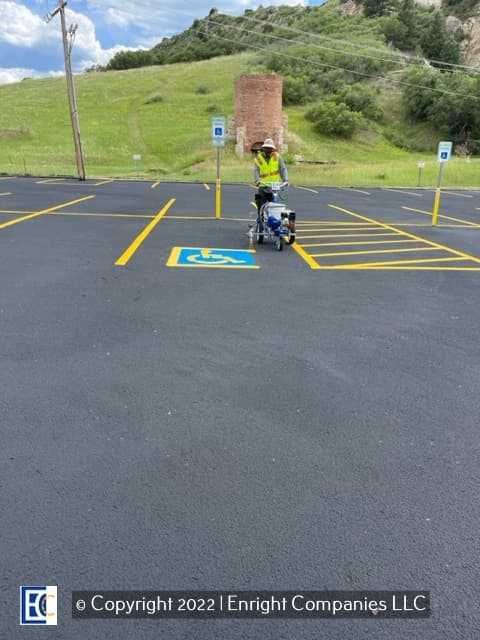ADA, or the Americans with Disabilities Act, is a federal law designed to protect people with disabilities against discrimination. One aspect of this law is to ensure that people with disabilities will not be discriminated against in any establishments. It is achieved by enforcing certain requirements that allow for safe and convenient access to any buildings in the United States.
If you own a business establishment, it’s a must for you to be aware of these requirements, and to be up to code not only to avoid hefty fines and costly lawsuits. More importantly, makes all of your guests have a great experience in your facility.
So, let’s discuss this in-depth so you’ll better understand how you can comply with these requirements.
The overarching goal of the ADA parking regulations is to ensure equal access and convenience for people with disabilities when visiting businesses, public facilities, and other establishments. ADA-compliant parking accomplishes two key objectives:
First, it facilitates accessibility and accommodates people with mobility limitations or who use wheelchairs, walkers, canes, or other assistive devices. By providing reserved wider parking spaces close to entrances, people with limited mobility can safely maneuver in and out of their vehicles and readily access the facility.
Second, ADA-compliant parking aims to provide equity in access for people with disabilities. Parking is a "service" provided by public accommodations, and the ADA mandates that this service be offered in a non-discriminatory, equivalent manner. ADA parking spaces help provide accessibility that is on par with what is available to the general public.

As mentioned, the Americans with Disabilities Act (ADA) is a federal law that prohibits anyone from discriminating against disabled Americans. ADA was signed into law on July 26, 1990.
Included in the legislation is a set of design standards to ensure their easy and safe access to any establishments that offer public accommodation, commercial facilities, and all state and local government facilities.
Generally speaking, if your establishment has a parking lot, you’ll have to meet ADA regulations since all “Places of Public Accommodation” are required to do so.
There are a few instances where parking lots do not have to meet ADA requirements. Religious organizations, places of worship and parking lots which are not open to the public. New construction or renovations to existing parking lots require the lots to be brought up to current standards.
Hospitals with outpatient care must have at least ten percent of their parking spaces dedicated to accessible spaces and every sixth accessible spot must be van accessible.
Outpatient medical facilities must have at least twenty percent of their parking spaces dedicated to accessible spaces and every sixth accessible spot must be van accessible.
Residential facilities are based on a ratio of units to parking spaces.
Spots must be located to closest accessible route to an accessible entrance into the building. The route needs to be at least 48” wide. Access ramps, can not extend into the access aisles. Also, obstructions such as bollards, signs or other items my not be located in the access aisle or the accessible route.
Here’s a chart that details how many accessible stalls you will need depending on the total number of stalls you have available:
| Total Number of Parking Spaces in Parking Facility (Lot or Garage) | Minimum Total Number of Accessible Parking Spaces Required | Minimum Number of Van Accessible Sparking Spaces |
| 1 - 25 | 1 | 1 |
| 26 - 50 | 2 | 1 |
| 51 - 75 | 3 | 1 |
| 76 - 100 | 4 | 1 |
| 101 - 150 | 5 | 1 |
| 151 - 200 | 6 | 1 |
| 201 - 300 | 7 | 2 |
| 301 - 400 | 8 | 2 |
| 401 - 500 | 9 | 2 |
| 501 - 1000 | 2% of total | |
| 1001 and over | 20, plus 1 for each 100, or fraction thereof, over 1000 |
To be ADA compliant, each parking stall must be at least 8 feet wide and 18 feet long. At the same time, there must be an adjacent “unloading zone” that is at least 8 feet wide. Two parking stalls can share one “unloading zone” except for angled parking. Parking lot striping should be used to mark the the spots correctly.
Van-accessible stalls need to have a vertical clearance of 98 inches. Van-accessible spaces need to be 11 feet wide with a 5 feet access aisle or 8 feet wide with an access aisle of 8 feet. Van-accessible stalls can share an access aisle, except for angled parking.
A sign with the international symbol needs to be mounted 60” above the ground. This is measured to the bottom of the sign. A visible universal handicap sign must be painted for every allotted disabled parking stall. Unloading zones should also be painted to discourage other vehicles from parking. A ‘No Parking’ sign needs to be permanently mounted in the middle of the aisle space unless it obstructs curb cuts. If there are any obstructions, then you will need to paint “No Parking” on the loading zone instead.

We at Enright want to ensure that all business establishment owners are equipped with sufficient information about ADA Compliance, and can keep up with any changes that may take place. That said, we’ve compiled a shortlist of resources you can review for a more thorough understanding of this federal law, and be able to regularly check if your establishment is still up to code.
[Resources]
Want to know if your parking lot is ADA Compliant?
We can help! Enright Asphalt offers FREE ADA Compliance Audit to help you ensure your building is up to code, and that you are not exposing yourself to fines, lawsuits, and even safety risks for your customers.
Contact us today to schedule your FREE Audit!